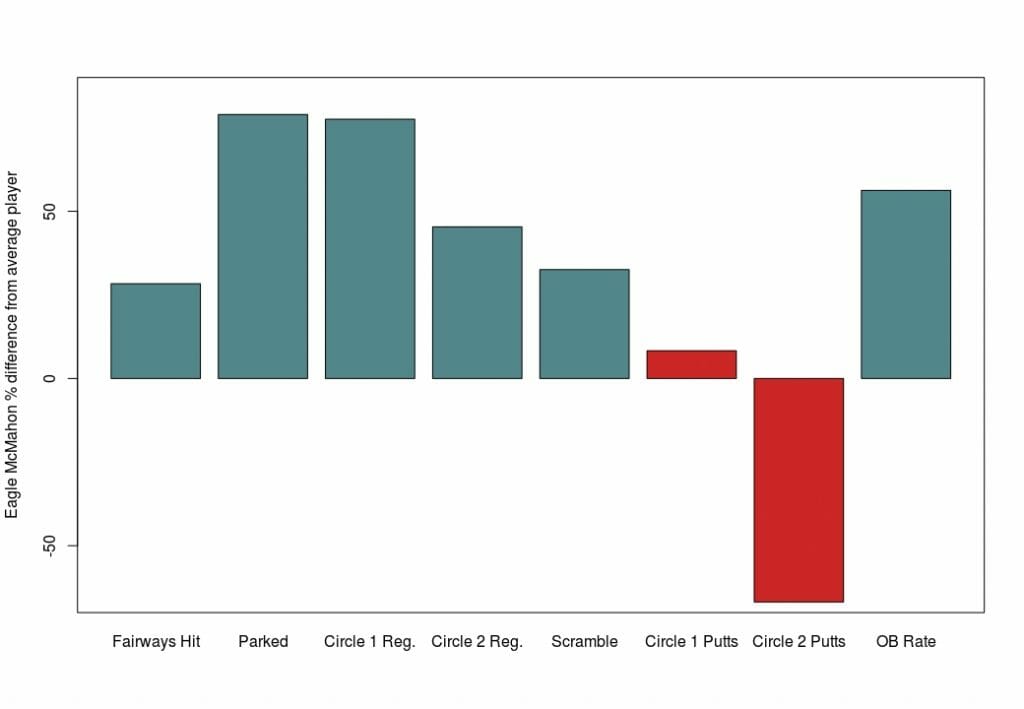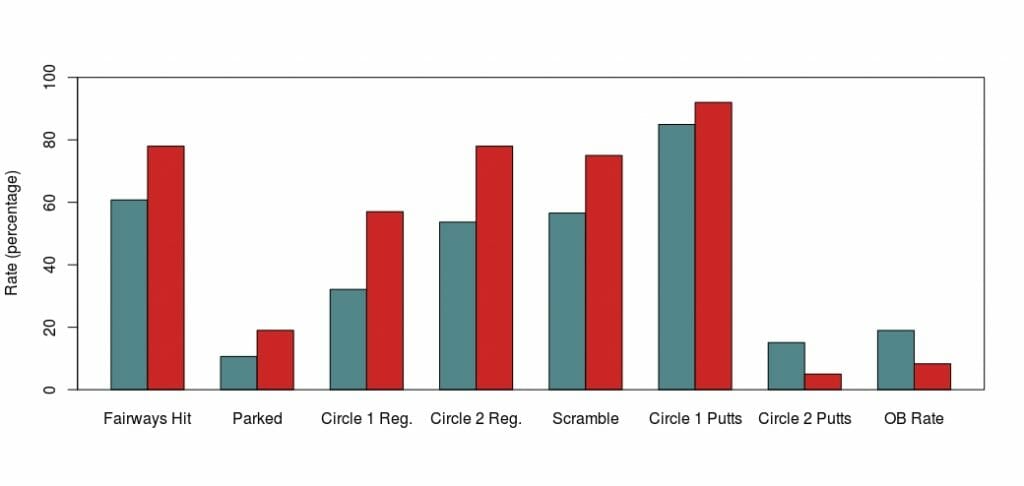McMahon proved long distance accuracy was a key to success at the Las Vegas Challenge
February 26, 2018 by Aaron Howard in Analysis with 0 comments

Eagle McMahon was very good at hitting fairways and reaching the green with a chance at par or better at the Las Vegas Challenge, where he delivered the first PDGA National Tour win of his career this weekend. This meant he didn’t have to be better than average at putting to win the tournament by an impressive four strokes. Using UDisc Live’s recorded statistics, we can compare McMahon’s performance to the field as a whole by looking at a number of key measures of distance accuracy that can give us greater insight into how exactly he set himself apart.

Eagle hit fairways 28% more than average and circle 1 in regulation a whopping 78% more than average (not to mention that he parked holes inside 5 feet at a high rate as well). Combine the influences of his great tee and fairway accuracy and you get his victory, despite the fact that he putted 67% below average from circle 2, and only slightly above average from circle 1. To put that in its larger context, McMahon was so proficient at reaching circle 1 that he barely had to attempt any putts from circle 2 (19 total through four rounds, for an average of 3.8 attempts per round). To add insult to injury, when he did make a mistake, which was rare considering how infrequently he went out-of-bounds, he was able to scramble out of it and save par at a rate 32% better than average.
One of the better examples of McMahon’s masterful tee and fairway play was on the 770-foot par 4 6th during round three at the Adidas Terrex course. He laced his drive down the center of the fairway (just avoiding those scary rocks some players had to throw from), then threw a forehand to within five feet of the hole for a tap-in birdie.
While 85% of the field threw their drives in the fairway on that hole, only 8% of the field parked their second shot inside five feet, and only 26% were able to reach circle 1 in regulation. Another example of McMahon’s accuracy was on display in the final round at the Innova course. On the 369-foot par 3 11th, he missed one of his few fairways, a big mistake considering that 65% of players hit this particular fairway. However, he was able to execute a lovely second shot to within five feet for the scramble par save and maintain his lead down the stretch.
McMahon was not alone in the overall trend of accuracy from the tee and fairway trumping that of above average putting. The ability to hit greens in regulation was obviously important for the success of all players. Hitting circles 1 and 2 in regulation were the two strongest predictors of success in terms of final standings on the leaderboard at the Las Vegas Challenge, with fairway hit rate pretty close behind.1 With similar style courses, but with more water hazard and out-of-bounds in play, one thing to watch for at the Memorial Championship next week is if this pattern of distance accuracy over putting accuracy as a determining factor for success holds for a second week in a row.
Below is a plot of the raw percentages for the average player (teal) and Eagle McMahon (red):

For the stats included, the Spearman rank-order correlation coefficients with place were 0.79, 0.71, and 0.6 for circle 1 in regulation, circle 2 in regulation, and fairways hit, respectively. The coefficients for circle 1 and circle 2 putting were 0.42 and 0.40, respectively. All five coefficients had p-values below 0.05. ↩